
0
+
Google Reviews

0
+
4.7 (2092 Ratings)
The solution for Big Data is built on open-source platforms and offers a comprehensive ETL data processing framework. It includes various tools for efficient data processing across distributed environments. Unlike SQL-based tools, it processes data without requiring centralized storage. This ensures scalability and flexibility in handling large datasets.


Curriculum Designed by Experts
• Distributed computing
• Data management – Industry challenges
• Overview of Big Data
• Characteristics of Big Data
• Types of data
• Sources of Big Data
• Big Data examples
• What is streaming data?
• Batch vs Streaming data processing
• Overview of Analytics
• Big data Hadoop opportunities
Enhance your career with Hadoop Dev + Spark & Scala training! Gain expertise in big data tools like Hadoop, Spark, and Scala to manage large datasets and optimize data processing. Enroll today to gain these highly sought-after abilities and unlock doors to rewarding data engineering employment prospects.
Hadoop Dev + Spark & Scala training opens doors to top tech roles like Big Data Engineer, Data Analyst, and Machine Learning Expert. These in-demand skills are sought by leading companies worldwide. Enroll now to boost your career and stay competitive in the data-driven industry!
As cloud adoption accelerates, Hadoop Dev + Spark & Scala training prepares you to handle vast amounts of data on platforms like AWS, Azure, and Google Cloud. Master these tools for efficient data processing, analytics, and scalability. Enroll today to thrive in this cloud-dominated tech landscape!
Hadoop Dev + Spark & Scala training offers the scalability and flexibility needed for managing large datasets. These tools enable seamless expansion and adaptability for diverse data-processing needs.Enroll now to gain expertise in scalable big data solutions and stay ahead in your career!
Managing costs effectively in Hadoop Dev, Spark, and Scala training is key to maximizing your ROI. By enrolling, you gain expert knowledge on optimizing Big Data processes, reducing infrastructure expenses, and improving performance. Invest in your skills to unlock the full potential of data-driven insights.
Ensure security and compliance with Hadoop Dev, Spark, and Scala training.Learn to safeguard data, follow regulatory standards, and secure Big Data pipelines.By enrolling, you’ll gain vital skills to protect sensitive information and stay compliant in today’s fast-evolving tech landscape.
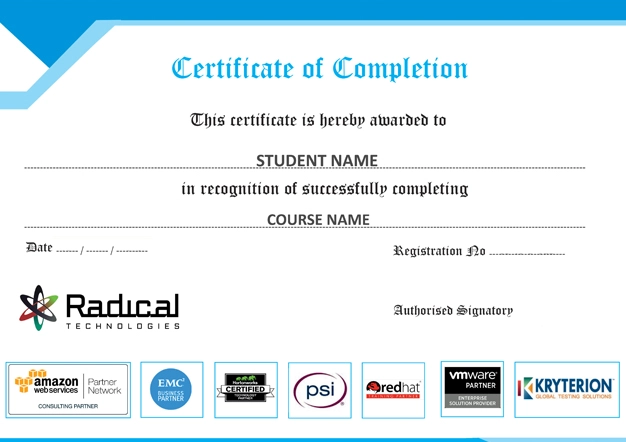


At Radical Technologies, we are committed to your success beyond the classroom. Our 100% Job Assistance program ensures that you are not only equipped with industry-relevant skills but also guided through the job placement process. With personalized resume building, interview preparation, and access to our extensive network of hiring partners, we help you take the next step confidently into your IT career. Join us and let your journey to a successful future begin with the right support.
At Radical Technologies, we ensure you’re ready to shine in any interview. Our comprehensive Interview Preparation program includes mock interviews, expert feedback, and tailored coaching sessions to build your confidence. Learn how to effectively communicate your skills, handle technical questions, and make a lasting impression on potential employers. With our guidance, you’ll walk into your interviews prepared and poised for success.
At Radical Technologies, we believe that a strong professional profile is key to standing out in the competitive IT industry. Our Profile Building services are designed to highlight your unique skills and experiences, crafting a resume and LinkedIn profile that resonate with employers. From tailored advice on showcasing your strengths to tips on optimizing your online presence, we provide the tools you need to make a lasting impression. Let us help you build a profile that opens doors to your dream career.

Infrastructure Provisioning
Implementing automated infrastructure provisioning and configuration management using Ansible. This may include setting up servers, networking devices, and other infrastructure components using playbooks and roles.

Applications Deployment
Automating the deployment and orchestration of applications across development, testing, and production environments. This could involve deploying web servers, databases. middleware, and other application components using Ansible

Continuous Integration
Integrating Ansible into CI/CD pipelines to automate software. build, test, and deployment processes. This may include automating the creation of build artifacts, running tests, and deploying applications to various environments.

Radical Technologies in Bangalore offers the best Hadoop Training In Bangalore. The comprehensive Big Data Course helped me gain practical skills in Hadoop and Spark, making me confident in handling big data projects.
The Big Data Certification Course at Radical Technologies is a game-changer. The trainers are experts in Hadoop and Spark, and the hands-on approach ensured I was well-prepared for real-world challenges.
I enrolled in the Big Data Course In Bangalore at Radical Technologies, and it exceeded my expectations. The course covered everything from Hadoop fundamentals to advanced Spark techniques, making it the best Hadoop Training in the city.
The Apache Spark Course at Radical Technologies is top-notch. The trainers' in-depth knowledge and practical approach to teaching made it easy to understand complex concepts. I highly recommend it to anyone interested in Big Data Training.
Radical Technologies offers the Best Hadoop Training In Bangalore. The Big Data Hadoop And Spark With Scala course provided me with the skills I needed to advance my career in big data analytics.
If you're looking for the Best Hadoop Institute In Bangalore, look no further than Radical Technologies. The Hadoop Spark Course was comprehensive and well-structured, covering both theoretical and practical aspects.
The Spark And Scala Training at Radical Technologies was a turning point in my career. The hands-on sessions and real-world projects helped me gain a deep understanding of Spark, and the Spark Certification has boosted my professional credentials.
I took the Big Data And Hadoop Course at Radical Technologies in Bangalore, and it was an excellent experience. The trainers are knowledgeable, and the course content is up-to-date with the latest industry trends.
Radical Technologies is the best place for Hadoop Training In Bangalore. The Big Data Course was thorough, and the Apache Spark Training provided me with the expertise to excel in big data projects.
The Hadoop Course at Radical Technologies in Bangalore was exceptional. The trainers explained complex topics in a way that was easy to understand, and the practical sessions were incredibly valuable.
Radical Technologies in Bangalore offers the best Big Data Certification Course. The Hadoop and Spark curriculum is comprehensive, and the hands-on experience is unmatched. I highly recommend this course to anyone looking to excel in big data.
The Big Data Course In Bangalore at Radical Technologies was exactly what I needed to upgrade my skills. The trainers are industry experts, and the course material is relevant and up-to-date.
I completed the Hadoop Certification Courses In Bangalore at Radical Technologies, and it was a fantastic experience. The Big Data Hadoop And Spark With Scala course gave me the skills and confidence to take on big data projects.
Radical Technologies in Bangalore is the best place for Big Data Training. The Hadoop Training was comprehensive, and the Spark and Scala modules were especially helpful in understanding the complexities of big data processing.
The Best Hadoop Training Bangalore can be found at Radical Technologies. The Hadoop Certification course was well-structured, and the trainers were always available to clarify doubts and provide guidance.
I enrolled in the Big Data Hadoop Certification course at Radical Technologies in Bangalore, and it was one of the best decisions I made. The course content is detailed, and the hands-on projects helped me gain practical experience.
The Apache Spark Course at Radical Technologies in Bangalore is exceptional. The trainers are knowledgeable, and the practical sessions are designed to give students real-world experience. I highly recommend this course.
Radical Technologies offers the best Big Data Certification in Bangalore. The Hadoop Course was well-structured, and the Spark and Scala training provided me with the skills needed to succeed in the big data industry.
The Big Data Hadoop And Spark With Scala course at Radical Technologies in Bangalore is comprehensive and well-taught. The trainers are experts in their field, and the hands-on approach made learning enjoyable and effective.
I highly recommend the Big Data Training at Radical Technologies in Bangalore. The Hadoop Spark Course was detailed and practical, providing me with the knowledge and skills to advance in my career.
Radical Technologies offers the best Hadoop Certification in Bangalore. The course content is thorough, and the trainers are dedicated to helping students succeed. The Big Data Course is a must for anyone looking to enter the field.
The Best Hadoop Institute In Bangalore is Radical Technologies. The Hadoop Training was comprehensive, and the Spark and Scala modules provided me with the skills to excel in big data processing.
I took the Spark Certification course at Radical Technologies in Bangalore, and it was an excellent experience. The trainers are knowledgeable, and the hands-on projects gave me the confidence to tackle real-world big data challenges.
Radical Technologies in Bangalore is the best place for Big Data Training. The Hadoop Certification Courses were well-structured, and the Apache Spark Training was incredibly insightful.
The Big Data Course In Bangalore at Radical Technologies was exceptional. The Hadoop Training provided me with a strong foundation, and the Spark and Scala modules helped me gain expertise in big data analytics.









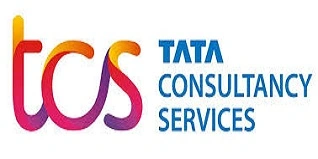


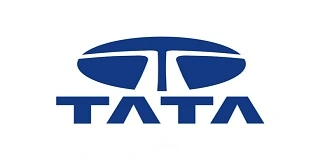
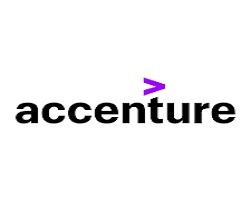
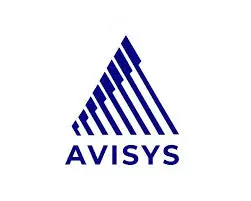


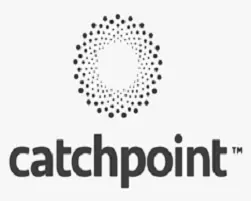


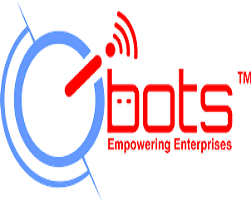
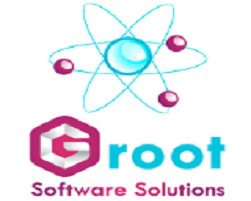

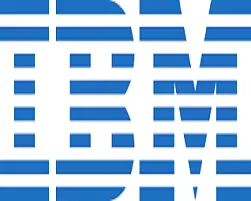

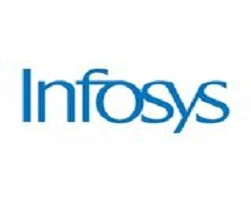
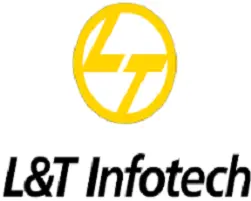
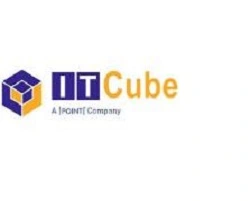
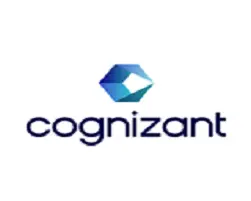
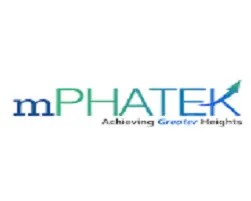
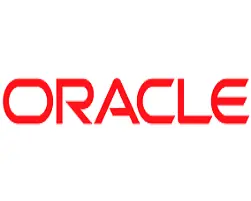
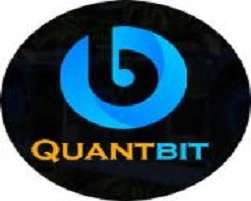
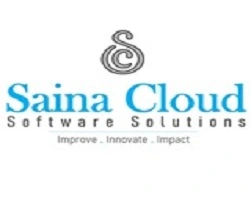

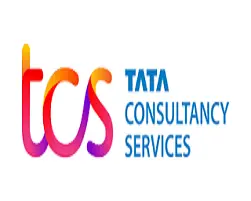
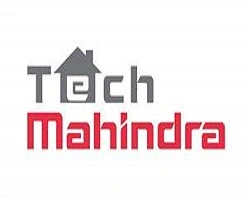

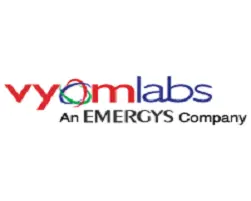

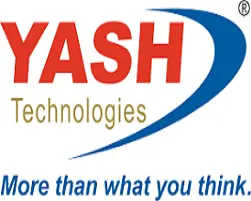
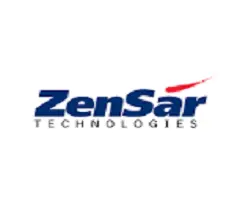
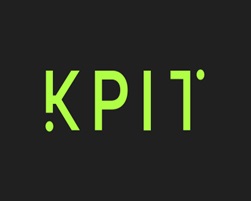
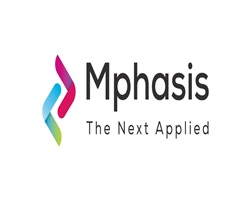
The Hadoop Developer + Spark & Scala course at Radical Technologies is a comprehensive training program designed to equip students with the skills needed to excel in big data processing and analytics. This course covers the fundamentals of Hadoop, Spark, and Scala, providing hands-on experience in managing and analyzing large datasets.
Radical Technologies is the leading institute in Bangalore for Hadoop Training, offering the most comprehensive and industry-relevant curriculum. Our experienced instructors, hands-on approach, and state-of-the-art facilities make us the preferred choice for Hadoop training in the city.
The Big Data Course at Radical Technologies covers a wide range of topics, including Hadoop architecture, HDFS, MapReduce, Apache Spark, Spark SQL, Spark Streaming, and Scala programming. The course also includes real-world projects to help students gain practical experience.
The Spark And Scala Training at Radical Technologies provides you with the skills to handle real-time data processing and analytics, which are highly sought after in the industry. This training enhances your employability and opens up opportunities in big data roles such as data engineer, data analyst, and big data developer.
The Hadoop Spark Course at Radical Technologies focuses on integrating Hadoop with Spark, covering both Hadoop’s data storage capabilities and Spark’s processing power. The Apache Spark Course, on the other hand, delves deeper into Spark’s functionalities, including Spark SQL, Spark Streaming, and machine learning with Spark.
Yes, the Big Data Certification Course at Radical Technologies is highly recognized in the industry. Our certification is valued by employers, as it demonstrates that you have received rigorous training in big data technologies and are well-prepared to take on challenging roles in the field.
Radical Technologies stands out due to our experienced faculty, comprehensive curriculum, and focus on practical, hands-on learning. Our courses are updated regularly to reflect the latest industry trends, and we offer personalized guidance to help you achieve your career goals.
Yes, you can enroll in the Big Data Hadoop And Spark With Scala course at Radical Technologies even if you have no prior experience. Our course is designed to start with the basics and gradually progress to more advanced topics, ensuring that all students can follow along and build their skills effectively.
The prerequisites for the Hadoop Certification Courses at Radical Technologies include basic knowledge of programming and databases. However, even if you are new to these areas, our introductory modules will help you get up to speed.
The Best Hadoop Training at Radical Technologies thoroughly prepares you for certification exams by covering all the necessary topics and providing extensive practice with real-world scenarios. We also offer mock exams and additional resources to ensure you are fully prepared to pass the certification tests.
Yes, Radical Technologies provides placement assistance to all students who complete the Big Data Hadoop Certification. We have a dedicated placement cell that helps students with resume building, interview preparation, and connecting with top employers in the industry.
The Hadoop Developer + Spark & Scala course at Radical Technologies typically runs for 8 to 12 weeks, depending on the learning track you choose. This includes both weekday and weekend batches to accommodate different schedules.
Splunk Training at Radical Technologies complements the Big Data Course by providing additional skills in data monitoring, analysis, and visualization. Splunk is widely used in big data environments for real-time data analysis, making it a valuable addition to your big data skill set.
During the Big Data Hadoop And Spark With Scala course, you will work on real-world projects that simulate industry scenarios. These projects involve tasks such as processing large datasets, building data pipelines, and implementing machine learning models using Hadoop and Spark.
Radical Technologies is considered the Best Hadoop Institute In Bangalore due to our comprehensive curriculum, expert instructors, state-of-the-art facilities, and strong focus on practical learning. Our commitment to student success and industry recognition further solidifies our position as the top choice for Hadoop training in the city.
Basavanagudi | HSR Layout | Sadashivanagar | Jayanagar | Koramangala | Whitefield | Banashankari | Marathahalli | BTM Layout | Electronic City | Rajajinagar | Domlur | Indiranagar | Malleshwaram | Yelahanka | Cooke Town | Nagarbhavi | Bannerghatta Road | Chandapura | Dasarahalli | Devanahalli | Anandnagar | Avenue Road | Byatarayanapura
I had an amazing experience with this service. The team was incredibly supportive and attentive to my needs. The quality of the work exceeded my expectations. I would highly recommend this to anyone looking for reliable and professional service."
I had an amazing experience with this service. The team was incredibly supportive and attentive to my needs. The quality of the work exceeded my expectations. I would highly recommend this to anyone looking for reliable and professional service."
I had an amazing experience with this service. The team was incredibly supportive and attentive to my needs. The quality of the work exceeded my expectations. I would highly recommend this to anyone looking for reliable and professional service."
I had an amazing experience with this service. The team was incredibly supportive and attentive to my needs. The quality of the work exceeded my expectations. I would highly recommend this to anyone looking for reliable and professional service."
I had an amazing experience with this service. The team was incredibly supportive and attentive to my needs. The quality of the work exceeded my expectations. I would highly recommend this to anyone looking for reliable and professional service."
In the era of big data, professionals with expertise in handling vast amounts of data are in high demand. The Hadoop Developer + Spark & Scala Certification is designed to equip you with the skills needed to excel in the field of big data analytics. This certification provides an in-depth understanding of the Hadoop ecosystem, along with the powerful data processing capabilities of Apache Spark and the versatile Scala programming language. Whether you’re a developer, data engineer, or IT professional, this certification can significantly enhance your career prospects in the big data domain.
The Hadoop Developer + Spark & Scala Certification course offers a comprehensive curriculum that covers the essential components of big data processing and analytics. The course begins with a solid foundation in Hadoop, including HDFS (Hadoop Distributed File System), MapReduce, and YARN (Yet Another Resource Negotiator). You will then delve into the Apache Spark framework, exploring its core concepts, such as RDDs (Resilient Distributed Datasets), DataFrames, and Spark SQL. Additionally, the course provides a thorough understanding of Scala, a functional programming language that is widely used for writing Spark applications.
While prior knowledge of programming and basic understanding of data processing concepts is beneficial, the course is designed to accommodate learners from various backgrounds. Beginners can start with foundational modules to build the necessary skills, while more experienced professionals can dive directly into advanced topics.
Completing the Hadoop Developer + Spark & Scala Certification opens doors to a wide range of career opportunities in the big data domain. Some of the roles you can pursue include:
These roles are in high demand across industries such as finance, healthcare, e-commerce, telecommunications, and more. With big data continuing to grow in importance, professionals with Hadoop and Spark expertise are well-positioned to secure lucrative positions and advance their careers.
The Hadoop Developer + Spark & Scala Certification is a powerful credential that equips you with the skills and knowledge needed to excel in the big data industry. By mastering Hadoop, Spark, and Scala, you’ll be able to tackle complex data processing challenges and contribute to data-driven decision-making in any organization. Whether you’re looking to upskill, switch careers, or advance in your current role, this certification offers a pathway to success in the dynamic and evolving field of big data.
Docker and Kubernetes have become essential tools in modern software development and IT operations, offering significant benefits in various applications. Below are some of the key areas where Docker and Kubernetes are widely applied:
1. Big Data Processing
Hadoop and Spark are the go-to tools for processing massive datasets in distributed computing environments. As a Hadoop Developer with Spark and Scala expertise, you can build and manage data processing pipelines that handle terabytes or even petabytes of data. These pipelines are essential in industries like finance, healthcare, and e-commerce, where large volumes of data need to be processed quickly and efficiently for real-time decision-making.
2. Data Warehousing and ETL
Hadoop, with its ecosystem components like Hive and Pig, is widely used for data warehousing and ETL (Extract, Transform, Load) processes. As a Hadoop Developer, you can create robust ETL workflows to transform raw data into structured formats, which can then be analyzed and queried for business insights. Spark, combined with Scala, enhances this process by providing faster in-memory data processing, making it possible to handle complex transformations and aggregations with minimal latency.
3. Machine Learning and Predictive Analytics
Apache Spark’s MLlib is a powerful machine learning library that allows data engineers and developers to build scalable machine learning models. With Hadoop and Spark, you can implement advanced analytics and predictive models that process large datasets, providing businesses with actionable insights. Scala’s functional programming capabilities make it easier to write concise and efficient code for these machine learning algorithms.
4. Real-Time Data Streaming
Spark Streaming is a key component for building real-time data processing applications. As a Hadoop Developer with Spark and Scala skills, you can create real-time data streaming applications that process continuous streams of data from sources like social media, IoT devices, and transaction systems. These applications are critical for scenarios that require immediate analysis and response, such as fraud detection, network monitoring, and live analytics dashboards.
5. Data Analytics and Business Intelligence
Hadoop and Spark are often used in conjunction with business intelligence tools to provide deep data analytics capabilities. By leveraging Hadoop for data storage and Spark for fast computation, developers can build analytics platforms that offer real-time insights into business operations. These platforms can be integrated with BI tools to visualize data trends, generate reports, and support data-driven decision-making processes.
6. Cloud-Based Big Data Solutions
With the increasing adoption of cloud platforms, Hadoop and Spark are now commonly deployed in cloud environments like AWS, Azure, and Google Cloud. As a Hadoop Developer with Spark and Scala expertise, you can design and implement cloud-based big data solutions that are scalable, flexible, and cost-effective. These solutions enable businesses to process and analyze large datasets without the need for extensive on-premises infrastructure.
7. Internet of Things (IoT) Data Processing
The explosion of IoT devices has led to a surge in the amount of data generated from sensors, devices, and networks. Hadoop and Spark are well-suited for handling the high volume, velocity, and variety of IoT data. By using Spark with Scala, developers can create real-time analytics applications that process and analyze IoT data, providing insights that can be used to optimize operations, improve product performance, and enhance user experiences.
8. Search Engines and Recommendation Systems
Hadoop and Spark are integral to building large-scale search engines and recommendation systems. Hadoop’s distributed storage and Spark’s processing power allow developers to handle the vast amounts of data required to generate accurate search results and personalized recommendations. Scala’s concise syntax and powerful functional programming features enable the creation of complex algorithms that can efficiently process and analyze user data to deliver relevant content.
Radical Technologies is the leading institute in Bangalore, renowned for offering the most comprehensive and industry-relevant Hadoop Developer + Spark & Scala Course, Training & Certification. Our commitment to excellence has made us the Best Hadoop Institute In Bangalore, attracting aspiring data professionals from across the country.
We specialize in delivering top-notch Hadoop Training In Bangalore, providing students with the skills and knowledge necessary to excel in the rapidly evolving field of big data. Our curriculum includes a wide range of courses such as the Big Data Course, Spark Course, Apache Spark Course, and the highly sought-after Hadoop Spark Course. Each program is meticulously designed to ensure that our students are well-prepared to meet the demands of the industry.
At Radical Technologies, we understand the importance of practical experience. Our Big Data Course In Bangalore emphasizes hands-on training, allowing students to work on real-world projects and gain invaluable experience in data processing, analytics, and machine learning. We also offer specialized courses like Splunk Training, designed to complement our Big Data Training and provide a well-rounded education.
Our Spark Certification and Hadoop Certification programs are recognized as some of the best in the industry. The Big Data Certification Course at Radical Technologies is designed to equip students with the skills necessary to handle large-scale data processing and analysis. Additionally, our Big Data Hadoop And Spark With Scala course is a comprehensive program that covers all aspects of big data and Hadoop, making it one of the most sought-after Big Data Hadoop Certification courses in Bangalore.
We take pride in being the Best Hadoop Training Bangalore has to offer. Our Apache Spark Training and Spark And Scala Training courses are tailored to meet the specific needs of our students, ensuring that they are equipped with the latest tools and techniques in big data processing and analytics. Whether you are a beginner or an experienced professional, our Hadoop Certification Courses In Bangalore provide the perfect platform to enhance your skills and advance your career.
At Radical Technologies, we are committed to delivering the highest quality education. Our experienced instructors, state-of-the-art facilities, and industry-aligned curriculum make us the preferred choice for those seeking the Best Hadoop Training In Bangalore. Join us at Radical Technologies, and take the first step towards a successful career in big data.


(Our Team will call you to discuss the Fees)

(Our Team will call you to discuss the Fees)
